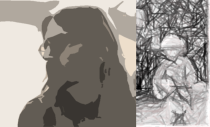An Evolutionary Biological Theory of Morality
Have recently finished reading James Q. Wilson's book, The Moral Sense, which presents an anthropological/sociological account of (and case for) the role of moral judgments in human experience. He argues that morality, or moral valuing, is grounded in four basic capacities we humans have because of our natures, reflecting the kind of creatures we have evolved into over the eons. We are, he reminds us, fundamentally social creatures and this requires certain capacities which we have developed as a species. He lists these as sympathy (caring about others in some cases), fairness (preferring equitable outcomes to inequitable ones), self-control (the capacity to restrain our desires and needs in order to attain our goals) and duty (the capacity to recognize situations in which we must subordinate our needs to requirements defined by others). He argues that these four competences, which most humans share because of genetic inheritance, provide the bedrock on which our social structures are built. He then proposes that the moral claims, beliefs and judgments we make arise as a function of the various culture-specific schemas that human beings develop in the many different societal groups that humans form.
These social forms of life may all be quite different across the planet because there's lots of room for variation, both because of environmental demands and the stickiness of practices which manifest as social conventions, but, he suggests, there are also certain core similarities among most humans which form the ground on which all social phenomena and institutions stand, i.e., the four capacities/competences he identifies as the basis for social groupings. . . .
 Anthropology,
Anthropology,  Evolution,
Evolution,  James Q. Wilson,
James Q. Wilson,  Moral Philosophy,
Moral Philosophy,  Society,
Society,  Sociology,
Sociology,  Values in
Values in  Ethics,
Ethics,  Stuart Mirsky
Stuart Mirsky 
 (Stuart W. Mirsky is the principal author of this blog).
(Stuart W. Mirsky is the principal author of this blog).



